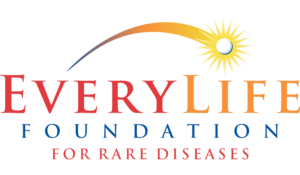

EveryLife Foundation Releases New Study Revealing Economic Burden of Rare Diseases in the U.S. Approached $1 Trillion in 2019
By Britta Dornan, Senior Director of Public Relations and Patient Engagement, EveryLife Foundation
In a new study released in February by the EveryLife Foundation for Rare Diseases, the estimated economic cost of 379 rare diseases in the United States totaled $966 billion in 2019, a figure that included quantitative estimates of direct, in-direct, and non-medical costs in 2019 and yielded from a comprehensive community-led effort.
The estimate is one of the key findings of The National Economic Burden of Rare Disease Study, the most comprehensive assessment of the total cost of rare diseases in the U.S. to date. A study that arose from a growing awareness among patient advocacy organizations that critical evidence to inform decision making has long been absent, it includes data that reflects the substantial costs absorbed by families and other segments of the ecosystem.
“This landmark report changes the conversation about rare disease by moving from back-of-the-envelope estimates to quantifiable data that reflect the true, massive economic impact a diagnosis has on families in the U.S. rare disease community,” said Annie Kennedy, Chief of Policy and Advocacy at the EveryLife Foundation. “Based on these data, rare diseases represent an urgent public health crisis that demands additional research, enhanced awareness, and improved access to diagnosis, care, and treatment.”
Top-line results from this new, comprehensive research includes the following:
The study estimates that individuals affected by these diseases incurred direct medical costs amounting to $418 billion in 2019, including expenditures for inpatient hospital or outpatient care, physician visits, prescription medications, and durable medical equipment.
The study also identifies indirect and non-medical costs, estimated at an additional $548 billion in 2019, as the primary cost drivers of the rare disease economic burden in the U.S. This estimate sheds light on a set of costs that previous studies did not examine across rare diseases. It includes the indirect costs of lost productivity due to forced retirement, absenteeism, “presenteeism” (lost productivity occurring when employees cannot fully function in the workplace), and social productivity loss in community participation and volunteer work.
This estimate also encompasses costs of health care services not covered by insurance, including experimental treatments, alternative or non-traditional treatments such as acupuncture, as well as medical foods and dental surgeries. Non-medical costs include paid daily care, necessary home and vehicle modifications, transportation costs, home schooling, missed schooling, and special education.


In the U.S., a disease is defined as rare when it affects fewer than 200,000 people. While there are estimated to be more than 7,000 rare diseases, The National Economic Burden of Rare Disease Study includes 379 rare diseases in its assessment.
“This research reveals so much more than dollars and cents. It brings to life the overwhelming and unrelenting financial, medical, and emotional challenges of living with a rare disease,” commented Marissa Penrod, mother of a son with a rare disease, Founder of Team Joseph, and an advisor to the study team. “For many families, the journey begins with the search for a diagnosis and hope for an effective treatment. It very quickly evolves into navigating a complex medical system, engaging in battles with insurance companies, and paying out-of-pocket for necessary home and vehicle modifications. This all happens within the typical demands of a family, while trying to hold down a job and maintain some quality of life. This report should be a call to action. We can do more to help our families, and we must.”
The EveryLife Foundation, the study’s sponsor and a National Health Council member, commissioned the Lewin Group to estimate the economic impact of rare disease in the U.S. in 2019, and assembled a distinguished steering committee of technical advisors and expert contributors representing national coalition partners, patient advocacy organization leaders, government, industry, academia, and rare disease communities. The study secured funding support from Alexion Pharmaceuticals, Amicus Therapeutics, Argenx US, Inc., AVROBIO, Chiesi Global Rare Diseases, Enzyvant Therapeutics, Genentech, Mallinckrodt Pharmaceuticals, PhRMA, Pfizer Inc., REGENXBIO Inc., Sanofi Genzyme, Sarepta Therapeutics, Spark Therapeutics, and Travere Therapeutics, Inc.
For more information about The National Economic Burden of Rare Disease Study, visit the study website at burdenstudy.org.
About the EveryLife Foundation
The EveryLife Foundation for Rare Diseases is a 501c(3) nonprofit, nonpartisan organization dedicated to empowering the rare disease patient community to advocate for impactful, science-driven legislation and policy that advances the equitable development of and access to lifesaving diagnoses, treatments, and cures. The Foundation provides the training, education, resources and opportunities to make patient voices heard, help change public policy and save lives.